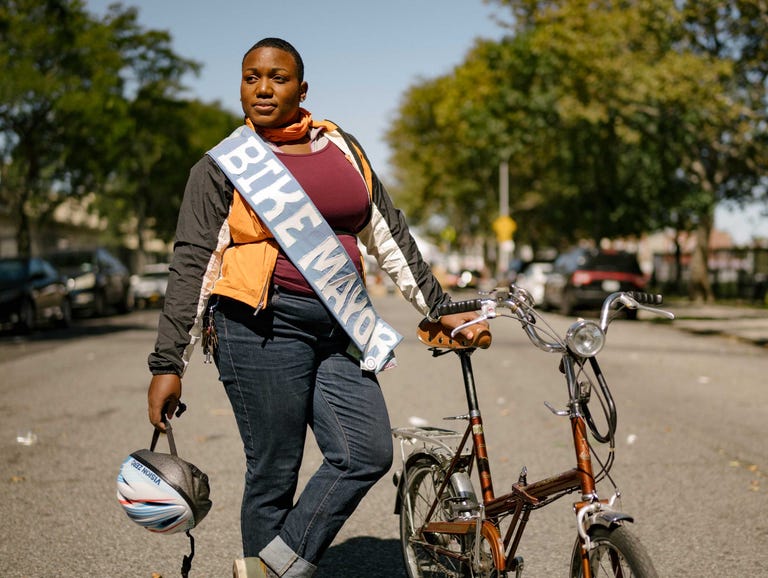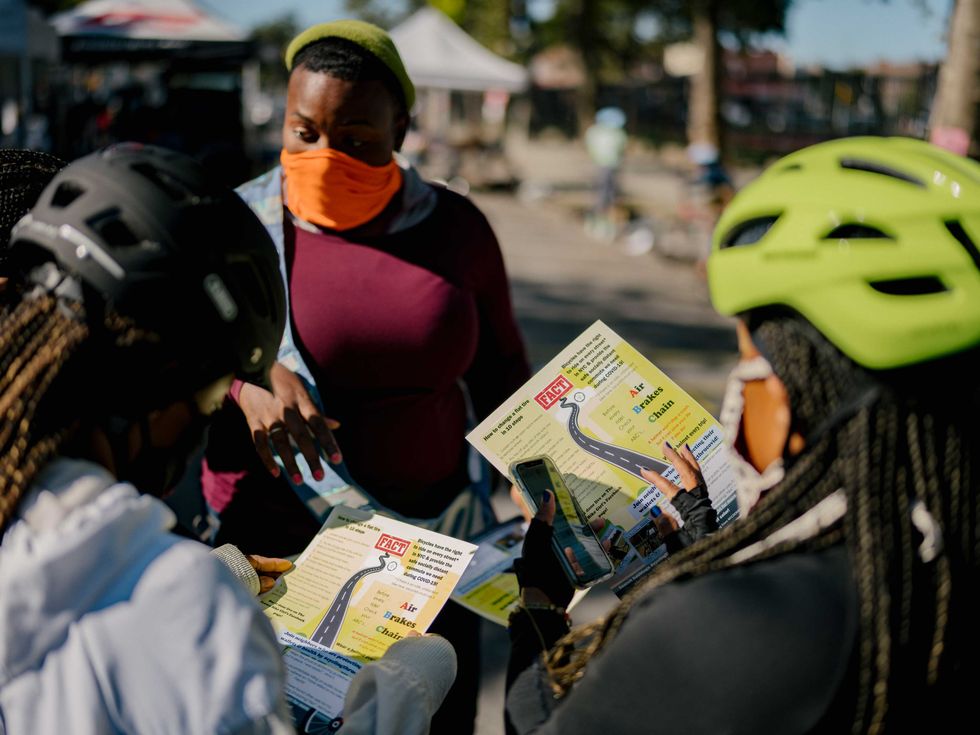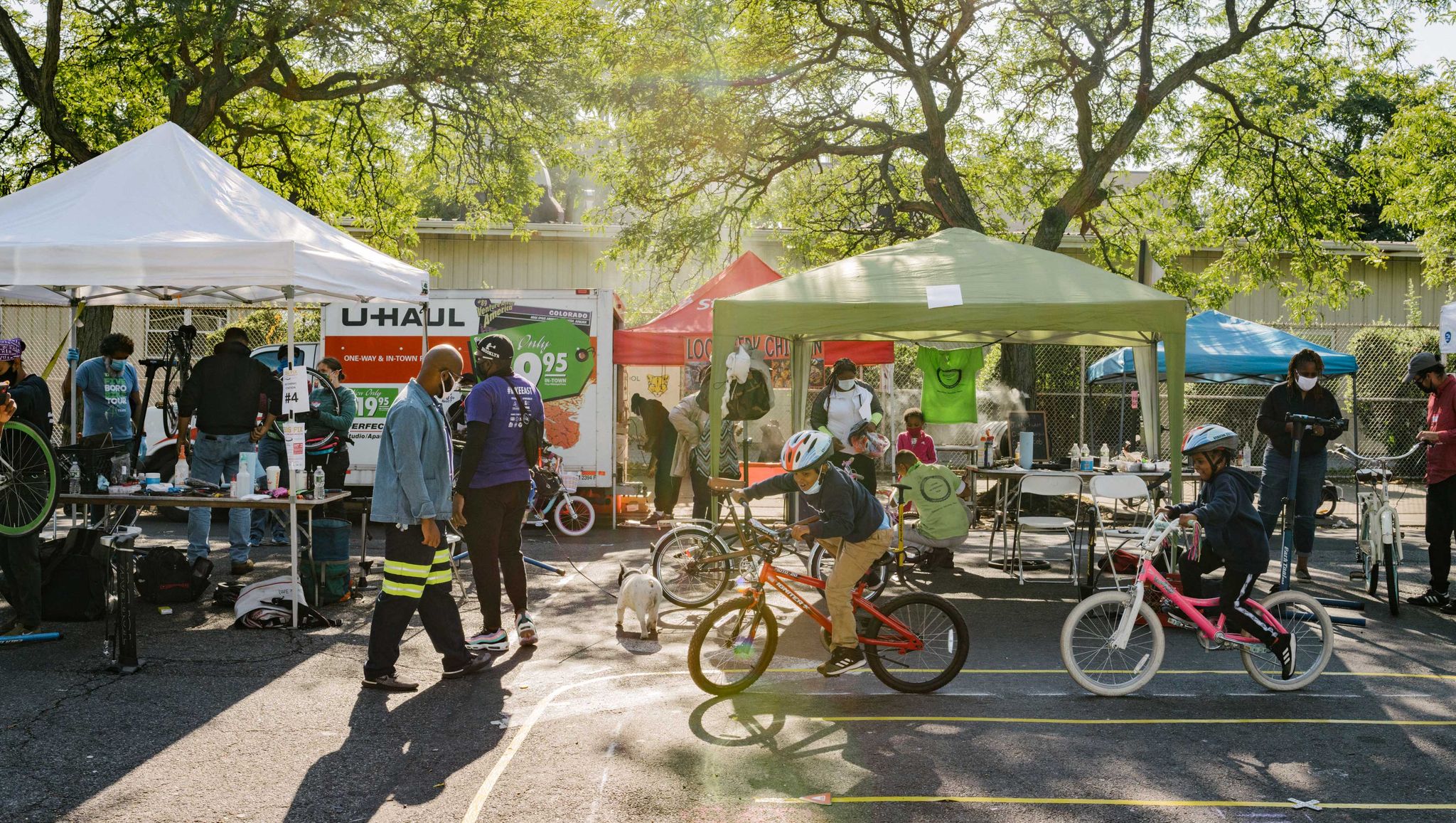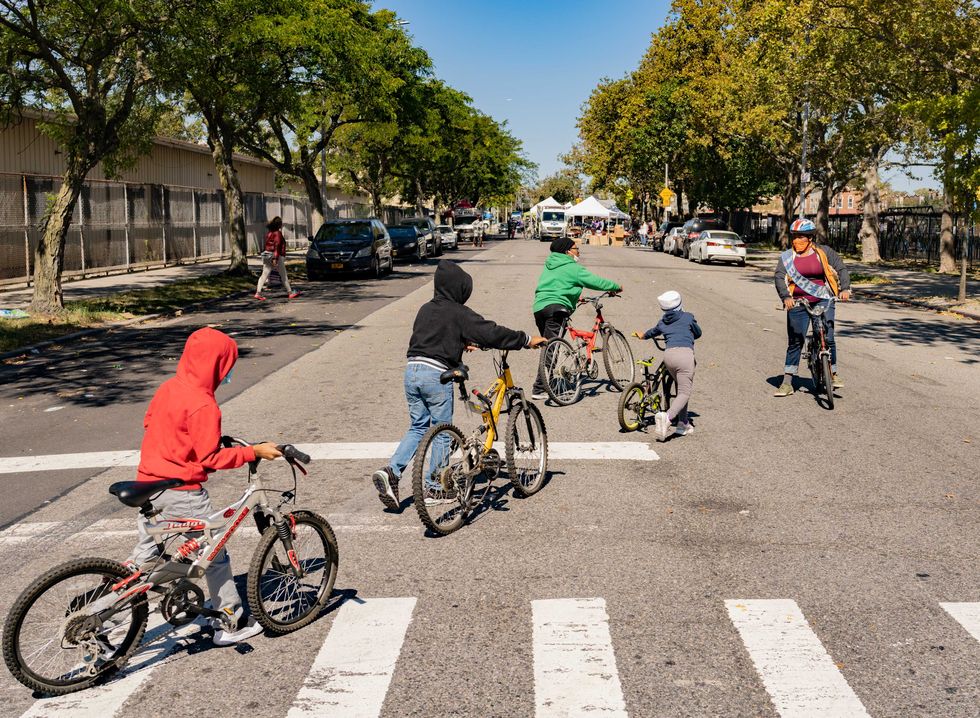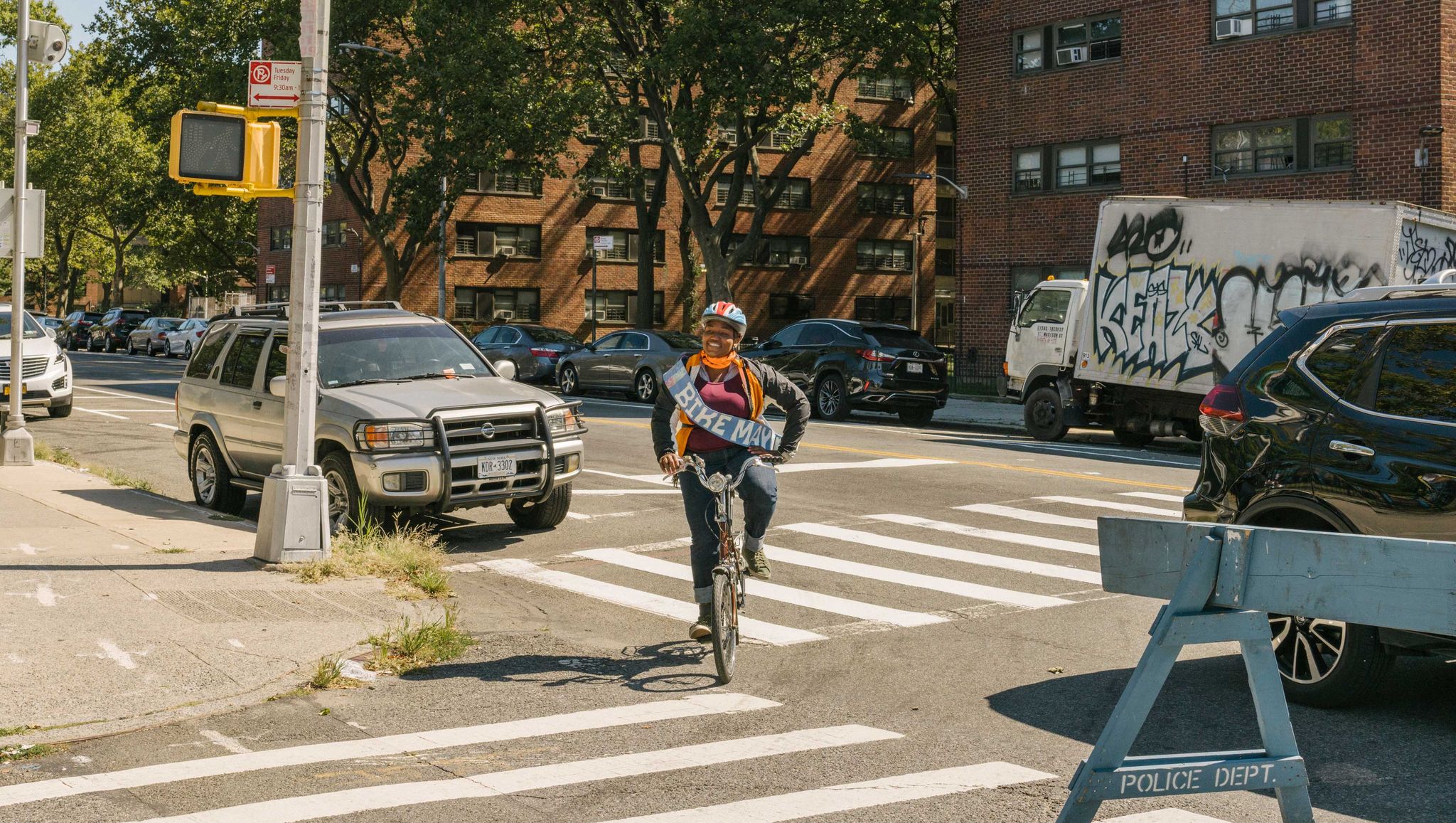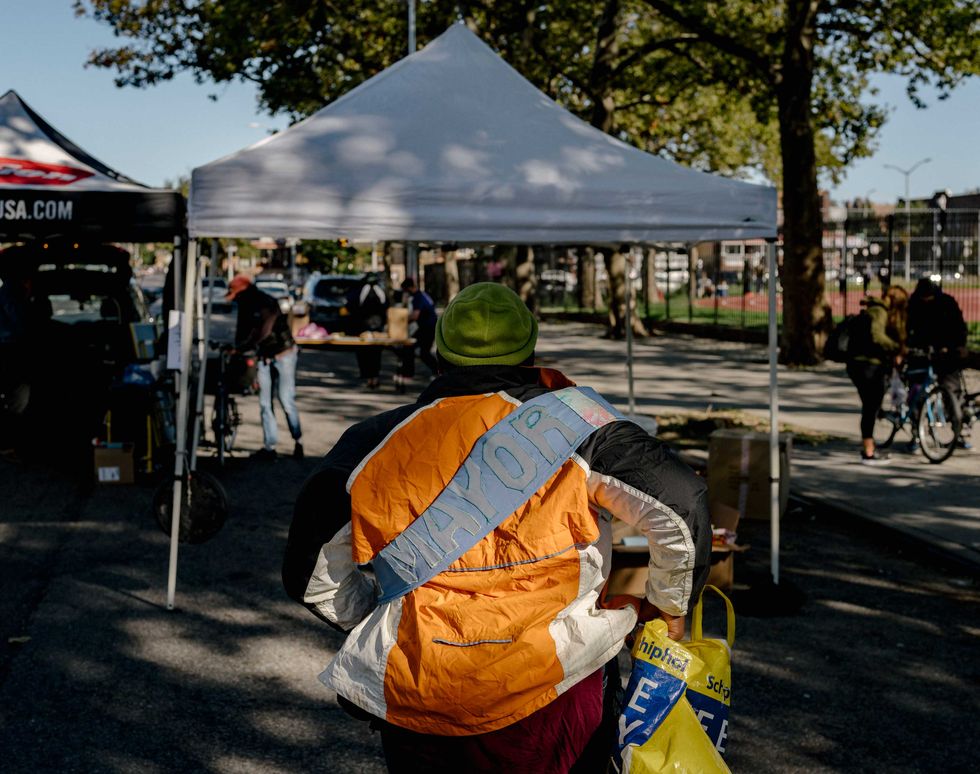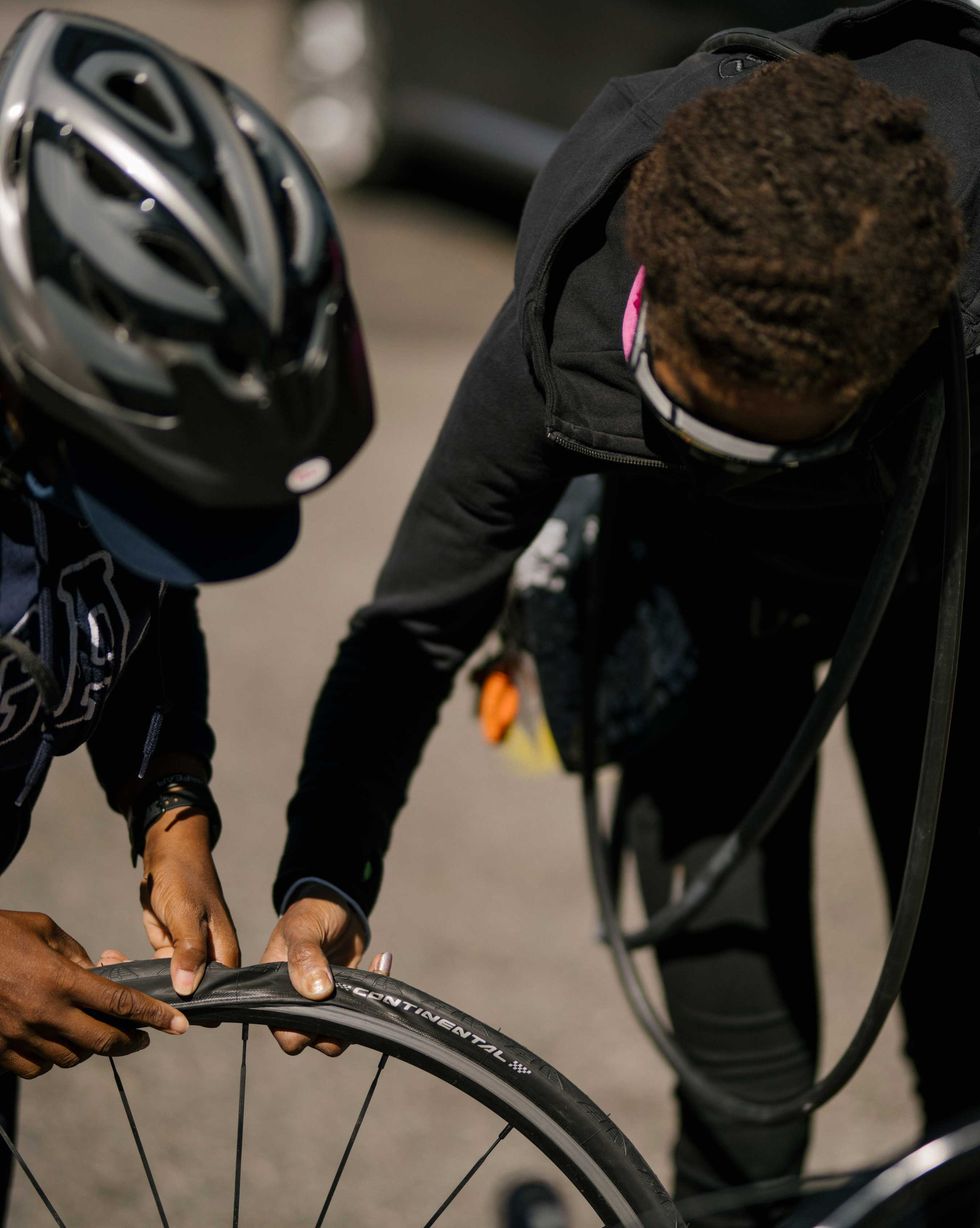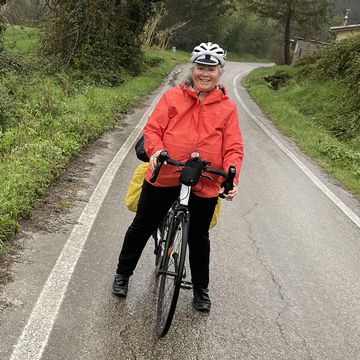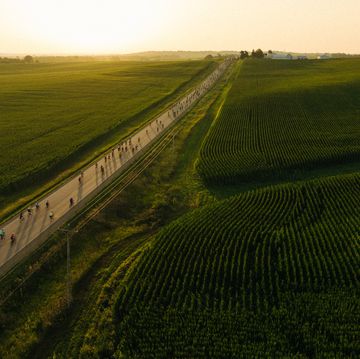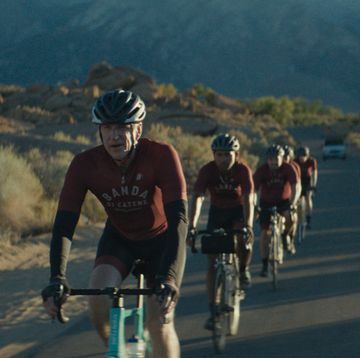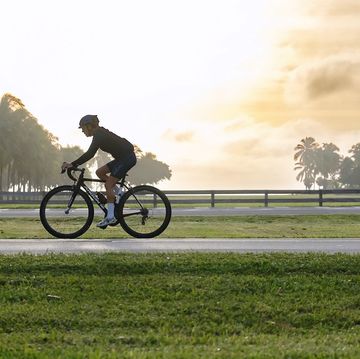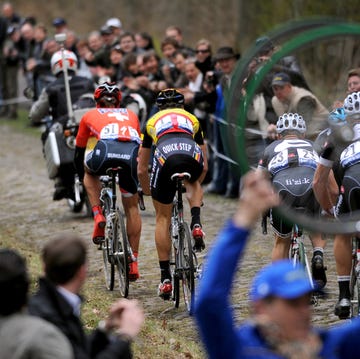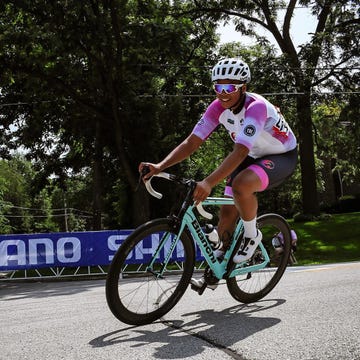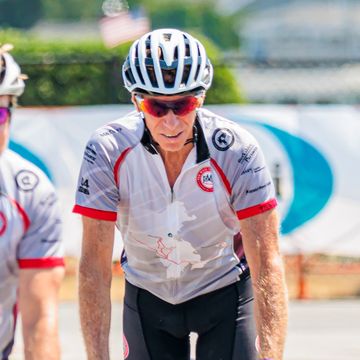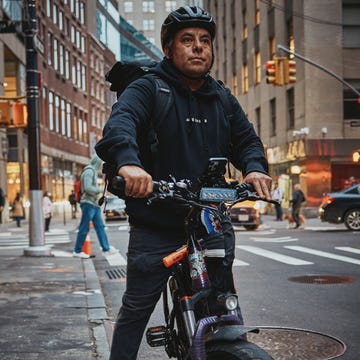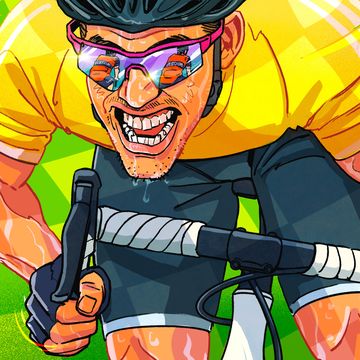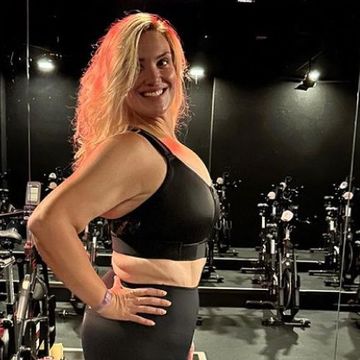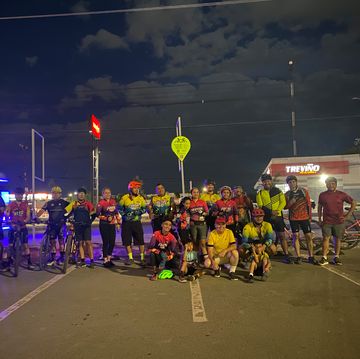It’s barely 10 a.m. on a warm Saturday in September, and the line already stretches down the block. Courtney Williams is easy to spot: She’s wearing a prominent Bike Mayor sash and ushering nearly two dozen people into the line to get their bikes repaired for free. The event, called the Big Fix, is a first for Williams in this East New York neighborhood of Brooklyn.
If not for the pandemic, Williams would be planning her annual ride through eastern Brooklyn, known as Bike East. This bike repair day is her Plan B for 2020, but her ultimate goal for both events is the same: to help communities underserved by access to transportation and health care, and to promote cycling as a means of safe travel.
That mission, to tap into cycling as a way to uplift overlooked, disadvantaged, and underfunded communities—especially communities of color—is at the heart of Williams’s work as a bike advocate. In addition to her rides and repair events, she leads Urban Road School cycling classes and runs her bicycling advocacy firm, Brown Bike Girl, consulting for local governments and nonprofits.
The year 2020 marked more than just a shift to repair days and virtual skill classes for Williams. In May she was named People’s Bike Mayor of New York City by BYCS, an international cycling advocacy organization. The title isn’t connected to city government, but it does give Williams a platform to advocate from and connects her to BYCS’s network of 100 bike mayors around the world. She also began leading workshops for white cyclists striving to be better allies to BIPOC riders and communities.
“East Brooklyn is a prime example of an underinvested neighborhood,” Williams says. “The disparities in transportation and health here are exacerbated and exemplified by COVID. It has the highest rate of diagnosis and death in all of Brooklyn.”
“We’ve got to prioritize building onto the existing network of bike lanes, and go to the outward edges where Black and brown people have been pushed to live,” she says.
Today’s lack of bike infrastructure in Black and brown communities is tied to discrimination that’s at least a century old. In 2019, during the civic organization BetaNYC’s Mobility for All Abilities Hackathon, Williams discovered a pattern to the city’s protected bike lanes. Most are in neighborhoods that used to be considered exclusively white dating back to the redlining era of the 1930s, when Black and other minority neighborhoods were deemed “definitely declining” (yellow) and “hazardous” (red) on maps produced by the federal government's Home Owners' Loan Corporation. The neighborhoods were then targeted by discriminatory housing practices based on their yellow and red designations. By comparing redlining data to current locations of protected bike lanes, Williams found that 28.2 percent are in what used to be exclusively white areas, whereas only 15.9 percent are in what used to be considered red and yellow zones, which now are predominately Black and brown neighborhoods.
“For the most part, the makeup of the [neighborhoods] remains the same,” Williams says. “Areas that were exclusively for white people remain mostly white and higher income, and they have a higher proportion of bike lanes of quality that significantly change the mortality rate for cyclists.”
Those disparities, compared to most of Manhattan or western Brooklyn, are the result of years of government failure. But there’s another dynamic: the perpetuation of a false narrative in New York City’s mainstream bike culture that cyclists are mostly white and mostly men, Williams says.
“The fastest growing segment of cyclists is people of color, and it has been for several years,” she says. From 2010 to 2019, the number of Black cyclists has grown by 98 percent, and Hispanic cyclists has grown by 29 percent, according to a MRI-Simmons Spring survey. Over that same 10 years, the population of white cyclists has grown just 3 percent.
“Cycling, promoted by those who are mostly white and mostly men, gets promoted to more white men,” she says. “They create the mainstream image of cycling and it perpetuates itself, and those same people are also the heads of a lot of bike advocacy organizations and street organizations.”
Join Bicycling All Access for more cycling stories
Cyclists in New York City are not just men in Lycra who do laps in Central Park. They are also essential workers who rely on two wheels to get to work, ride home, and transport their families and other necessities. But until white allies in the biking community recognize diversity in cycling and see it as more than just a sport but a way of life, Williams says, those disparities will persist.
The inequities and racism within biking can’t be dismantled on their own, says Williams. They require white cyclists to be active allies with their Black and brown neighbors to ensure that all cyclists, no matter what they’re riding or where they live, have access to safe bike infrastructure.
Being an ally, says Williams, means recognizing that wealthy, majority-white neighborhoods already have a proliferation of protected bike lanes and politicians who advocate for them. And it means advocating to pause the work being done there, she says, and pivot to typically overlooked communities.
And being an ally extends beyond just individual riders but also to advocacy organizations and nonprofits that promote cycling. Leaders in those groups must look within and ask what they are doing to make biking accessible for everyone—not just people who look like them.
“I’ve never seen any traditional mainstream organizations come out and set up in a neighborhood where they would otherwise would feel uncomfortable hanging out,” says Williams. “But that’s how equity starts.”
But the biggest and most important thing an ally can do is shut up, listen, and amplify the voices of Black and brown folks, who are often silenced, Williams says. “The number one thing for being an ally is elevating and articulating the points that Black and brown advocates and activists have been saying, and bringing those to the table of where you are, and crediting them when you say it. Elevate their points because they are obviously not being accepted from the bodies that are speaking.”
The Big Fix was the first in-person event she’s organized since being named People’s Bike Mayor in spring 2020, Williams says. Her other events, such as her Road School classes on urban riding, went virtual as a result of the pandemic. And with her new title and citywide clout, Williams was able to attract riders from all over the city for the event, including some who rode in from more than an hour away.
This spring she hopes to host another one, if not two, in upper Manhattan and the Bronx—more neighborhoods devastated by COVID and that suffer from a lack of access to cycling.
Williams’s goal for her Big Fix bike event was to fix at least 100 bikes. By 1 p.m., the predominantly Black and brown mechanics she’d hired had already tuned up more than 50, and they had well surpassed the goal by late afternoon.
But that’s more than just a number, Williams says. It means more than 100 people— kids, teens, adults—will now be riding around on safe, freshly tuned-up bicycles.
“People were rolling up all day, saying ‘thank you,’ that this was a blessing. There were bikes that definitely needed help,” Williams says. “Riders come out from the neighborhood and literally say to me, ‘oh, I’m so happy you’re here because I haven’t had air in my tire for a year.’ I hope to see 100 more dedicated, safe, helmeted, and well-fitted cyclists from East Brooklyn through the rest of the year.”
